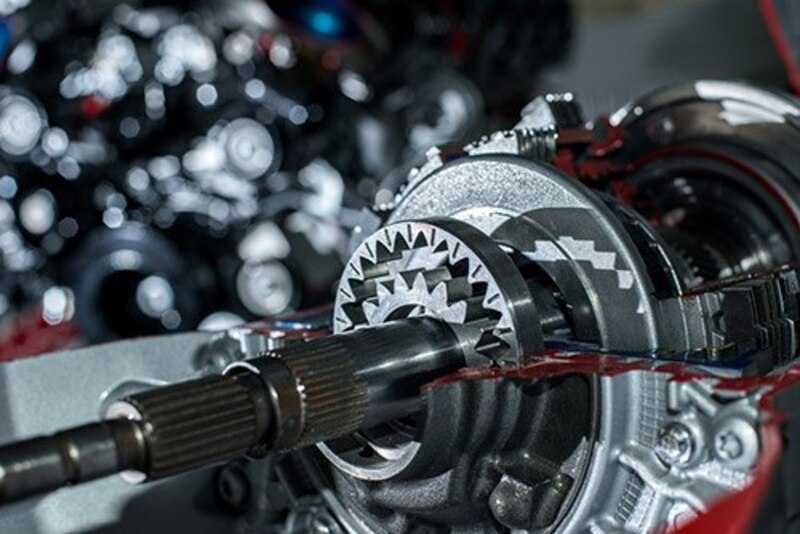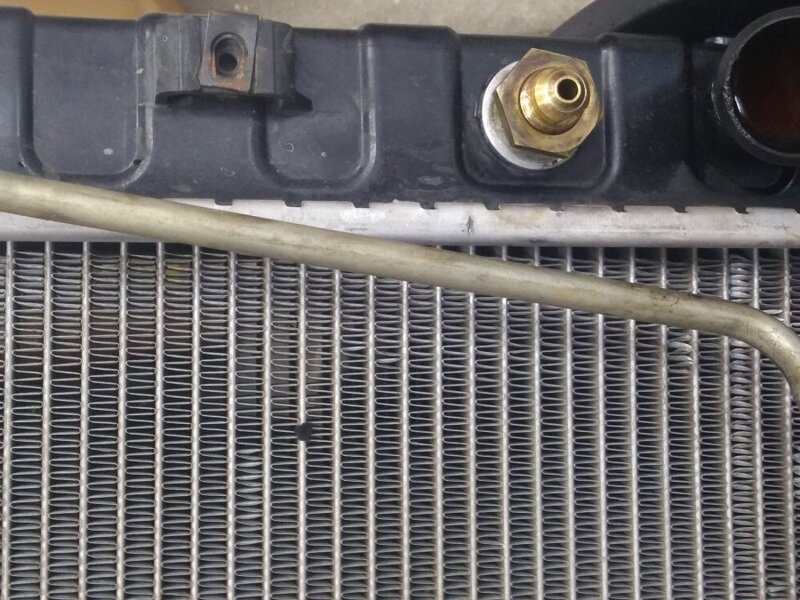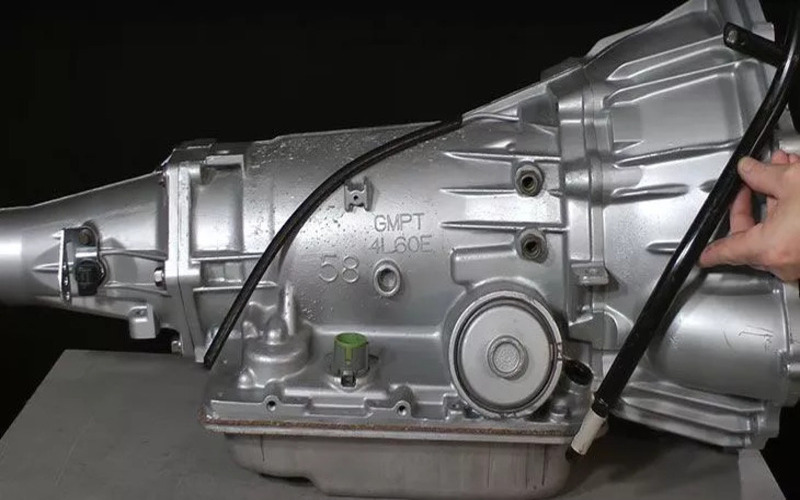A car is made up of different systems that facilitate its mobility. One of these many systems is the transmission.
This vital system has many moving parts and can get very hot due to friction; therefore, it must constantly cool down.
Are you facing a transmission cooler line leak at the radiator? This article sheds more light on everything you need to know concerning transmission cooler line leaks and how to solve this issue.
Let’s get started!
What Causes Transmission Cooler Line Leak At Radiator?
Bad o-rings are a major cause of transmission cooler line leak at radiator. These o-rings are located at the link between the radiator and the transmission cooler lines. If there are leaks in your transmission lines especially at this link, you will need to replace the o-rings.
Transmission cooler lines can be described as hoses or tubes that transport heated transmission fluid from the vehicle’s transmission through the radiator and back to the vehicle’s transmission.
The transmission fluid flows through this cooler line into the radiator, where heat is exchanged by the coolant passing over the transmission cooler line.
What Does Transmission Cooler Line Do?
A significant amount of friction exists between gears in the transmission, thereby causing a whole lot of heat to be created as these gears interact.
If this heat is not managed correctly, it will cause the vehicle’s transmission to overheat and damage various components of the vehicle’s transmission.
Therefore one of the primary reasons why the vehicle’s transmission needs cooling is to prevent overheating and failure.
The transmission of any vehicle needs adequate cooling to function at maximum capacity, and there are many ways cooling is attained within the vehicle’s transmission.
Some vehicle transmissions are designed with internal cooling, and other vehicles are designed with both internal cooling and external cooling.

Also Read: Transmission Fluid Leak (Causes & Solution)
How to Know if You Have a Transmission Cooler Line Leak At Radiator
Here are some common signs you have a trasmission cooler line leak:
- You will notice burning smells. If your transmission overheats due to low transmission fluid levels, you are most likely to perceive burning smells from your transmission.
- A drop in transmission fluid levels will cause problems when shifting gears. These problems cause poor shifting responses. And as we all know, leaks in the transmission cooler line can result in Low transmission fluid levels.
- Transmission cooler lines with structural damages like cracks, holes, or bulges can also be sources of leaks. Visually inspect your cooler lines for any of these.
- One of the most visible features of a leaking transmission cooler line is noticing drops of red fluid leaking beneath the vehicle.
- Grinding and squealing noises emanating from your gearbox whenever you shift gears or put your vehicle in reverse is a significant sign of leakage in your transmission cooler line.
- Another symptom that can further confirm your suspicion of a leak in your vehicle’s transmission cooler line is low transmission fluid levels which can be established by using a dipstick to check the quantity of transmission fluid in its reservoir.
Where Else Can Transmission Cooler Line Leak?
The transmission cooler line stretches from the vehicle’s transmission to the radiator and back to the vehicle’s transmission. Leaks can originate from anywhere along the entire length of the vehicle’s transmission cooler lines.
However, junctions and fittings are more likely to be the origin point of leaks. Still, leaks can originate anywhere along the lines due to the age of the material used in producing the color line or structural damage like a puncture on a transmission cooler line.
How to Avoid Transmission Cooler Line Leak At Radiator?
The best way to prevent future leaks is to regularly check your transmission fluid level and get your vehicle’s transmission routinely serviced. Always be on the lookout for any form of leak to tackle this issue immedatly
How Long Does Transmission Cooler Line Leak At Radiator Repair Take?
The estimated time needed to repair or replace the transmission cooling line depends on many factors, like where the leak originated from, the complexity of your transmission system, and how accessible the leak is for repairs.
You should be ready to leave your vehicle in the repair shop for at least a day so the mechanic will have enough time to assess all leaks and find solutions.

Can Replacing With Rubber Hoses Solve Transmission Cooler Line Leak At Radiator?
Yes! You can use rubber hoses which are designed specifically for transmission cooling lines. These rubber hoses are unlike the normal ones as they have been more durable and tempered to withstand heat.
Specifically, you could use steel braided or nylon braided hoses, which are still rubber hoses but have been reinforced with either steel or nylon to increase the lifespan and resilience of the hose to heat.
If you cannot find any of these, it is better to stick them to your aluminum composite hoses
What is Transmission Cooler Line Leak At Radiator Repair Cost
The cost of replacing or repairing your transmission cooling line depends on various factors. For instance, if the parts needed to fix or replace your transmission cooler line are scarce, replacing it may cost you more.
However, the average cost for replacing or fixing your transmission cooler line doing this from $10 to $500
How to Fix Transmission Lines Leaking at Radiator?
Fixing the transmission cooler line leak at the radiator can sound complex and tedious, but following the proper procedure could make it easy.
Troubleshooting: The first step to fixing anything in a vehicle is to troubleshoot and find the origin of the fault. In this case, you need to track down the source of a transmission line leak.
Fixing the Transmission Lines: Suppose the leak originates from along the transmission line. To fix it, you must either repair or replace a transmission line.
If you wish to repair the transmission line, you can use a sealant for a temporary solution or a clamp for a more permanent one.
Fixing the Radiator: If the structural damage causing the fluid to leak is within the radiator, then you must replace the radiator to stop the leak.
Fixing the Radiator Cap: A faulty radiator cap will not seal properly and allow transmission fluid to leak out. You will need to replace the bad radiator cap to fix this issue.
Fixing the O-Rings: If the leak’s origin is at the connection between the transmission cooler line and the radiator, then to fix the leak, you will need to replace the bad o- ring by clamping down that connection.
Important Note: Flushing the transmission fluid from the system once you fix the leak is essential. It will help remove any debris or air bubbles that might be dissolved in the transmission fluid.
You are good to go once you flush out the old transmission fluid and put in a new one.
Also Read: Transfer Case Leaks (Causes & Solution)
Frequently Asked Questions – Transmission Cooler Line Leak At Radiator
Can transmission fluid leak from the radiator?
A leaking transmission cooler line can cause transmission fluid to leak from the radiator.
Are transmission lines connected to the radiator?
Yes! Transmission lines are connected to the radiator with the help of O-rings
Why are my transmission cooler lines leaking?
Your transmission cooler line is leaking due to structural damages along your transmission cooler line, for example, punctures, bulges, and cracks.
Conclusion – Transmission Cooler Line Leak At Radiator
The vehicle’s transmission is an important system that enables the car to function. If there is a leakage along the transmission cooler line, it should be fixed immediately.
Transmission cooler lines can leak at the radiator and anywhere along the line. Following the information above, you can locate and fix your transmission cooler line leak at the radiator or along the line.

